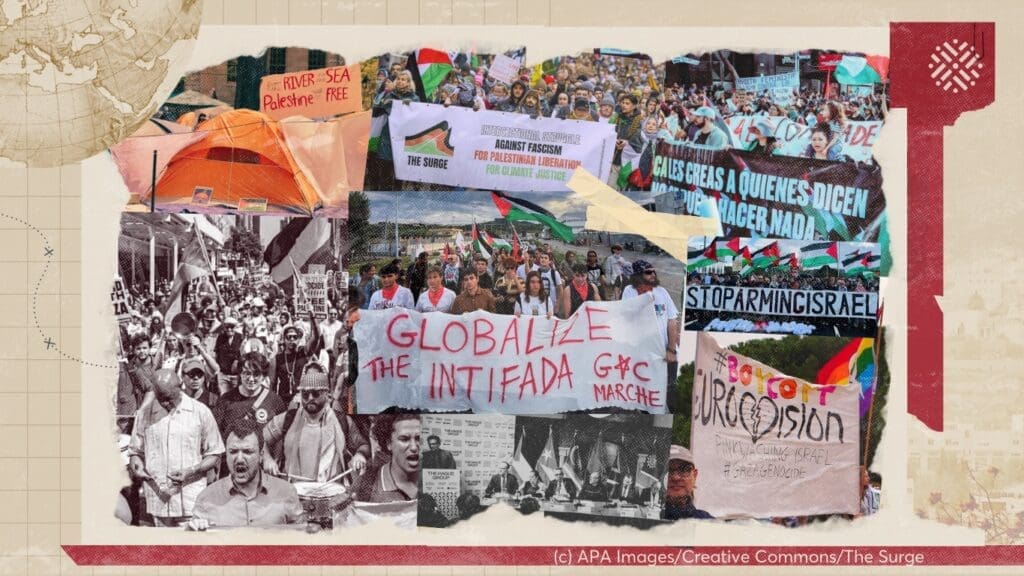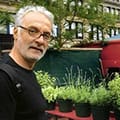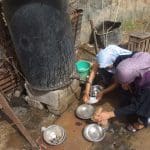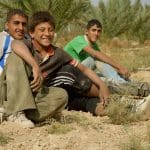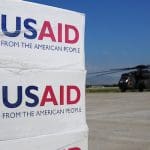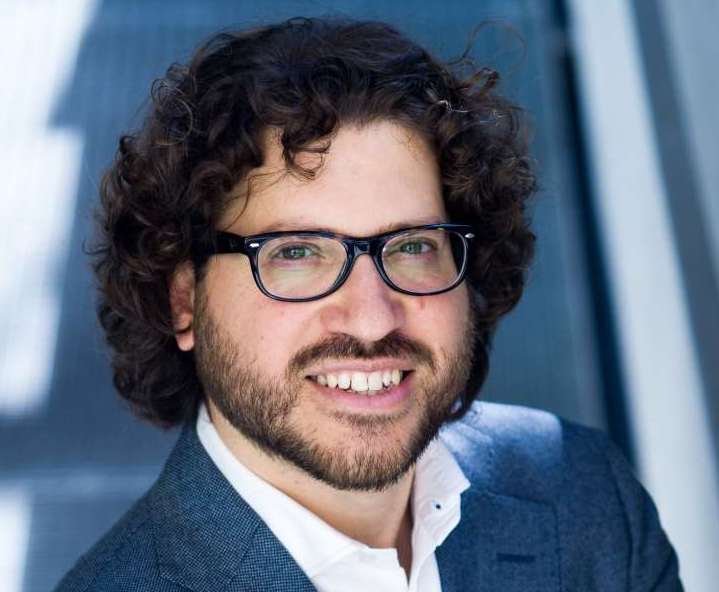
Overview
For Palestinians, agriculture is more than a source of income or an economic category in budgets and plans. It is tied to the people’s history, identity, and self-expression, and drives the struggle against Israel’s Separation Wall. In this brief, Lebanese activist, author, and agronomist Rami Zurayk joins Al-Shabaka Policy Advisors Samer Abdelnour and Alaa Tartir to tackle the almost spiritual significance of the land to the Palestinians and the deliberate Israeli efforts to break the link between farmers and their crops. They also discuss the Palestinian Authority’s terrible neglect of the agricultural sector and the destructiveness of some donor aid.1 The authors argue that farming is a productive, meaningful, and multi-dimensional form of popular resistance through which Palestinians can demonstrate – to themselves and the world – the urgent need to reclaim lands, livelihoods, and freedom.2
The Culture of Land
The value of the land underlies much Palestinian poetry and literature, including the work of Tawfiq Zayyad, Mahmoud Darwish and Ghassan Kanafani. For example, in Mahmoud Darwish’s powerful words,
And on our eyelashes the grass of Galilee,
This land absorbs the skins of martyrs,
This land promises wheat and stars.
More recently, Suheir Hammad’s poem Land depicts the love of a farmer as a slow, nurturing, humanizing emotion that intimately connects soil to passion.
Staples such as olives, za’atar, figs and date palms are deeply rooted in the culture and history of the land. They provide nourishment during difficult times, require little in terms of water and maintenance, and are well adapted to the climate. The destruction of olive trees is particularly devastating. Oxfam’s 2010 report, The Road to Olive Farming, demonstrates the importance of olives to Palestinian identity, local markets, and economic and psychological wellbeing. Even after all the destruction by the Israeli state and Israeli settlers, the olive oil sector contributes $100 million to some of the poorest families, as Oxfam notes. MA’AN Development Center has documented the worth of the olive trees in the occupied Palestinian territories (OPT) in a new brief on ancient trees –between 100 and 1,000 years of age – that are uprooted and sold in Israel (50% illegally) for between $8,000 and $26,000. For farmers, olive trees are a sacred trust to be transferred across generations, and their loss is both economically and emotionally devastating.
The olive tree is also widely known as a symbol of Palestine and home, and many Palestinian women, particularly in exile, wear necklaces adorned with carefully carved replicas. Yet when Palestine is presented as an ideal outside of the ability to cultivate, Palestinians are in danger of losing the knowledge of how to nurture, live from, and share the land with future generations. For a people dispossessed, it is imperative to cultivate and regenerate relationships with the land.
The Israeli occupation forces know this only too well. In addition to outright land confiscation and annexation, home demolition, and destruction of water cisterns and systems, staples like za’atar have been politicized commodities since the 1970s. For example, Israeli occupation forces have confiscated za’atar plants at checkpoints, supposedly to “protect” the ecological health of wild za’atar.3 Similarly, the Palestinian citizens of Israel have been forbidden from collecting thyme in the wild as was traditionally done, as the Israeli authorities declared it a “protected plant.”
In besieged Gaza, Israel has at various times prevented cardamom, cumin, cattle, goats, donkeys, and dozens of other items from passing through its blockade. In the West Bank town of Beit Sahour, Israeli occupation forces went to great length to capture cows during the 1st Intifada so as to prevent local milk production (the West Bank is to this day highly dependent on Israeli milk). Such actions are just examples of Israel’s control and devastation of Palestinian food culture and capability as part of the attempt to definitively break the tie to Palestine. As Henry Kissinger allegedly said, “control food and you control the people”.
Imprisoned Lands
The West Bank’s agricultural potential is well known, but less is written about the potential of the Gaza Strip, and very little about the pastoral lifestyle of the Bedouin. Throughout the occupied territories, the agricultural sector has been devastated by Israeli policies as well as the Palestinian Authority (PA) and donor policies and practices.
The farming sector began to be affected when thousands of Palestinians left their land in the West Bank and Gaza to work in Israel and in the Israeli settlements, partly due to the higher wages offered as part of the Israeli economic integration and containment policies, and partly because of Israeli economic restrictions that reduced local opportunities. After the Oslo Accords, Area C, which constitutes 62% of the West Bank and includes the most of the fertile land, natural resources and water, came under full Israeli military and settler control.
In Gaza, Israel’s “security” belt constitutes 17% of the Strip and is also under its full military control. Some 30% of Gaza’s agricultural land remains inaccessible, up from 25% three years ago.4 The zone’s rain‐fed crops include wheat, barley, beans, various vegetables, olives, almonds, citrus trees, and most of the Gaza Strip’s animal production. Indeed, the United Nations reported that by 2009 a total of 46% of Gaza’s agricultural land was inaccessible or out of production owing to destruction of lands during Israel’s 2008-9 bombardment of Gaza and the “security” zone.
Moreover, the residue of phosphorous and artillery shells and the increase in the salinity of the soil seriously impact the quality of the food that farmers are able to produce, and consequently seriously affect their health as well as that of their families and consumers. A new report on Gaza’s children found that nitrates found in feces and fertilizer are linked to the doubling of the incidence of watery diarrhea in children since Israel’s blockade began. As for Gaza’s fishing industry, some 90% of fisher folk are unemployed and fishing has been restricted to three rather than the 20 nautical miles agreed under the Oslo Accords.
It is common to ignore the Bedouin in discussions about Palestinian agriculture, and not just in Palestine. Throughout the Arab world, the mistaken belief prevails that green areas are fertile and valuable while the desert is useless. Who would want to die for the land where Bedouin roam? Worse still, such a view by extension implicates all people living in deserts as having no use and no value; urbanites and farmers alike discriminate against them. Sadly, many have fallen prey to material notions that prescribe value to land without understanding how important pastoral landscapes are – for people, animal husbandry, the freedom to roam, and the nation itself. The reality is that the Bedouin’s pastoralist lifestyle characterizes sustainability. It is a means for settling and living on the land in an efficient and productive manner, as well as ecologically maintaining it for future generations.
There are approximately 13,000 Palestinian Bedouin in the OPT, with around 2,300 residing in 20 communities just east of Jerusalem. More than 80% are refugees and of those living in Area C, 55% are food insecure. The Bedouin have lost almost all access to lands due to the ethnic cleansing associated with settlement expansion. Most have demolition orders pending against their homes, and lack secure access to water and electricity. Many face severe security risks, including exposure to land mines.
As it has done for decades, Israel continues to apply the same practices across both sides of the Green Line. Calls for the cleansing of the Negev (al-Naqab) come from Israeli academics and the Jewish National Fund (JNF) alike. The Bedouin village of El Araqib has reportedly been demolished as many as 35 times; the JNF plans to plant a “peace forest” in its place. There is a need to move beyond any paradigm that permits the devaluation of parts of the homeland and its people. The ability of Palestinian Bedouin to freely practice their lifestyles is the litmus test of Palestinian freedom as a nation.
Pernicious Policies
Although not as devastating as Israel’s colonization and dispossession of the Palestinian people, the PA and donor policies have still been pernicious. Conventional economic theories are applied to the occupied territories, expecting them to thrive by specializing in the production of goods in which they have a competitive productive advantage. In fact, the main goal of a people under occupation should be to free their land, not to compete with free nations using economic indicators that have been voided of political context.
The absurdity of such policies is very well expressed in a paper by George Kurzom in which he argues for self-reliant agricultural development. He describes how much Palestinian agriculture was shifted from key staples to luxury market products such as flowers as a result of the encouragement given by the Israeli military government to Gaza farmers as of the late 1980s. The aim was to “steer Palestinian agriculture into producing products that correlate with the requirements of the Israeli economy, whether for direct consumption or to fill the gaps in Israeli exports” and to prevent competition with Israeli goods.
During the 2nd Intifada the Israeli occupation forces destroyed a huge number of trees – much of it citrus. In fact, Gazan farmers would prefer to grow orchards, but are often pushed towards vegetables, wheat, and barley by aid projects. The Israeli army “prefers” low-lying crops in the access-restricted zones along Gaza’s eastern border.
The World Trade Organization also encouraged the PA and donors to support Palestinian flower producers, estimating that this could generate as much as $14 billion and calling on the PA to increase the land area for flower cultivation from some 200 acres to 31,000 acres. As Kurzom asks, “Why should so many accommodations be made for a luxury product and not for a basic strategic crop such as wheat?”
Once the shift had been made to export markets, repeated (and in the case of Gaza, almost permanent) Israeli border closures destroyed harvests and farmers’ livelihoods and ended the Western-inspired dream of “billions” in revenue from Palestinian luxury exports of flowers and strawberries as well as other less exotic agricultural products. When exports are not blocked, Israel benefits from taxes it collects for itself and “on behalf” of the Palestinians.
A Sector Condemned by Neglect
In June, the Palestinian Economic Council for Development and Reconstruction issued a report noting that, since the PA’s establishment the amount allocated to the agriculture sector did not exceed 1% of the total PA annual budget. A previous study had revealed that between 2001 to 2005 around 85% of the agriculture budget went to the agriculture ministry’s staff salaries, a pattern repeated to the present time. Confirmation of agriculture’s dramatic decline is provided by official Palestinian data sources: Its contribution to GDP dropped from around 13.3% in 1994 to 5.7% in 2008.
Moreover, agriculture only accounted for around 1.41% of international total aid (around $14 million out of $1 billion) between 1994 and 2000 and actually decreased between 2000 until 2006 to reach around 0.74% ($30 million out of $4 billion.)5 In addition, between 1999-2008 only around 10% of donor funding to Palestinian non-governmental organizations (NGOs) was directed toward rural development.6 Although the percentage of the NGOs working in the agricultural sector increased from 2.8% of the total number of NGOs in 1999 to 5.5% in 2006, this was associated with an alarming increase in the level of aid dependency in the NGO sector as a whole from around 54% in 1999 to around 80% in 2006 (and as much as 94% in NGOs working on issues related to water and environment).
The picture that emerges is one of more projects with more NGOs but less land and less farming. Certainly there are micro successes here and there but unless they are part of a unified effort and strategy they will have very limited impact. There are other examples where the focus is at the micro level whereas the whole edifice is in danger of collapsing, such as the many initiatives to give free seeds to farmers to plant in areas where the soil has been contaminated, leading to waste and, worse, disease.
Unwelcome practices by some donors (and not just in Palestine) also affect the agricultural sector. A former Palestinian agriculture minister publicly criticized the Japanese development agency JICA after revealing that only $700,000 out of an approximately $6 million project had actually been disbursed in the OPT over its three-year duration. Of course, this issue is not exclusive to JICA, and many other donors’ practices should be reviewed.
There are many other issues that negatively impact on the agricultural sector, including problems with land registration, the decline in arable land, and the parceling of land into small plots, as described in a recent study by MAS.7 Urban expansion at the expense of farmland is an especially serious problem in the OPT.
Righting the Wrongs
The conventional approach to food security promoted by international finance and development institutions advocates reliance on markets and free trade. This approach has resulted in the demise of local food systems worldwide. It also does not recognize the right to produce food and consume locally produced food.
When Palestinians can grow their own food on their own land and are able to fish their sea, displacing Israeli produce from the market, they will be food secure. Eating local produce provides essential micronutrients, nurtures the soil, and fosters ecological connections between people and land, as opposed to the dependency caused by normalization policies, aid, and agricultural imports. Indeed, those bilateral partnerships that support a cash crop economy in Gaza are directly complicit in Palestinian malnourishment. How is it possible to consider diverting land and resources to produce flowers and strawberries for European markets while 88% of Gazans receive food aid and 75% are malnourished?
There is a need to strategize the relationship to the land in a way that links as many livelihoods as possible to it, particularly in area C where only 5% of Palestinians now live. Through determination, commitment, and the intelligent use of agricultural subsidies, Palestinian farmers must be enabled to remain on their land and reinforce its productive capacity. Policies to support low-intensity agriculture can encourage maximum employment creation. The harvests should be primarily directed to local consumption, with priority given to displacing food aid and imported products where possible. Every farmer planting and growing on the land of Palestine is more powerful than a fighter. Farming is an important form of resistance and our farmers are at the heart of the struggle for survival and freedom.
A farming platform is central to building a resistance economy. These are many ways to simultaneously cultivate local livelihoods, reduce aid dependency, and exert Palestinian right to the land, even under conditions of settler colonialism and prolonged occupation. Kurzom suggests “a well-designed internally integrated agricultural unit.” For example, sheep are a source of food, fertilizer, and income. Trees grown along retaining walls such as carob, oak and grapevines, not only help limit water and soil erosion; their fruits and leaves provide food, their wood can be used as fuel, and the peelings and leaves can be used as animal feed. Legumes help the soil preserve water and nutrients, while herbs can serve as green fodder in winter.8 In such an integrated model, Palestinian technicians and engineers would produce and maintain the tools and machinery needed for local production instead of the continuous import of “irrelevant techniques from outside.”9
The Food and Agriculture Organization suggests that urban agriculture, vertical gardens and aquaponics be used in the Gaza Strip, given that the vast majority of inhabitants are urban or camp dwellers.10 Alternative models that have been tried among war-affected communities in Lebanon, for Palestinian refugees, and across Sudan, can also be tapped for Palestinian development under occupation.
In addition, as part of the effort to apply alternative models, there is a need to explore the long-running human costs of the occupation from an economic history perspective. This can help support the resilience of Palestinian existence on the land and to conceptualize socioeconomic models of how living and working the land brings much more benefit than that might be marketed.
A Right to Farm Campaign
There is a need for a Right to Farm Campaign that will mobilize local communities as well as solidarity activists, agricultural unions and donors for a resistance economy that is deeply connected to the unique cultures, history, land, and political aspirations of the Palestinian people. Unlike the rhetoric and mirage of “state” or “institution” building, a farming policy can bring clarity and direction to Palestinian development because it would connect Palestinian consumers, farmers, Bedouin, and refugees and exiles in a resistance economy. Employment would be generated and local markets strengthened, regaining some measure of control over the Palestinian economy.
Palestinian ministries, civil society, and agricultural unions can encourage volunteerism to protect and farm the land, especially among the youth. Initiatives such as those by Al-‘Ona, which volunteers to reclaim neglected lands, or Ehna Ghair, are examples to explore and replicate. Both of these volunteer youth initiatives help farmers rehabilitate and reclaim their lands particularly in areas under threat of settlement expansion. By so doing, they hope to encourage youth to return to farm the land and preserve it from settlement expansion as well as convey a clear message to the PA about the importance of the land and of farming.
The boycott, divestment, and sanctions movement (BDS) could also contribute to this cause by providing a platform to link farming and herding initiatives with global movements. BDS organizers and activists, already versed in the importance of boycotting Israeli produce, can reach out to farmer and agricultural cooperative unions to spread awareness and help foster relationships with Palestinian farmers.
Donors frustrated with Israel’s demolition of aid projects will find the direct subsidizing of farmer and herder livelihoods a much more viable and effective enterprise. Funds for Area C should be directed to low-intensity agriculture for maximum employment creation, with the harvest going to local consumption to displace food aid.
Turning to farming as the means of economic resilience and resistance will not be easy. Israel’s occupation is predicated on disconnecting the Palestinians from the land, an objective at the very core of the Zionist project from its earliest days. But, as discussed above, there are ways in which it can – and must – be done.
Palestine’s poverty is a politically engineered human catastrophe in which economic growth and freedom are contradictory endeavors. The nature of Palestinian dispossession demands that the path to freedom be the land and everything associated with it: farms and fields, desert and sea, farmers and Bedouin, milk and olives. Reclaiming Palestinian land is not just reclaiming our past: it is how we will build our future.
- We thank Anne Gough and Nadia Hijab for their insightful comments.
- Al-Shabaka publishes all its content in both English and Arabic (see Arabic text here). To read this piece in French, please click here. Al-Shabaka is grateful for the efforts by human rights advocates to translate its pieces into French and Italian, but is not responsible for any change in meaning.
- Ross, Fiona. ‘Palestinian Territories’ in Albala, Ken (ed.) Food Cultures of the World Encyclopedia, Volume 1, 2011, pp285-296; page 287.
- Zurayk, Rami & Gough, Anne. ‘Control Food, Control People: The Struggle for Food Security in Gaza’ Institute for Palestine Studies, forthcoming.
- Sahar Taghdisi-Rad, The Political Economy of Aid in Palestine: Relief from Conflict or Development Delayed? Routledge, 2011.
- Tracking External Donor Funding to Palestinian Non-Governmental Organizations in the West Bank and Gaza 1998 and 2008, Alaa Tartir and Joseph DeVoir, MAS and NDC, 2009. Available online at: http://www.ndc.ps/uploads/File/Researches/Tracking%20External%20Donor%20Funding.pdf
- English executive summary here.
- Kurzom, op.cit., pp. 30-32.
- Ibid, p.24.
- Aquaponics combines soil-less vegetable growing (hydroponics) and fish farming (aquaculture) in a closed system, where the nutrient-rich wastewater from the fish tanks is used as an organic fertilizer for plant production, removing the constant need for chemical fertilizers.

